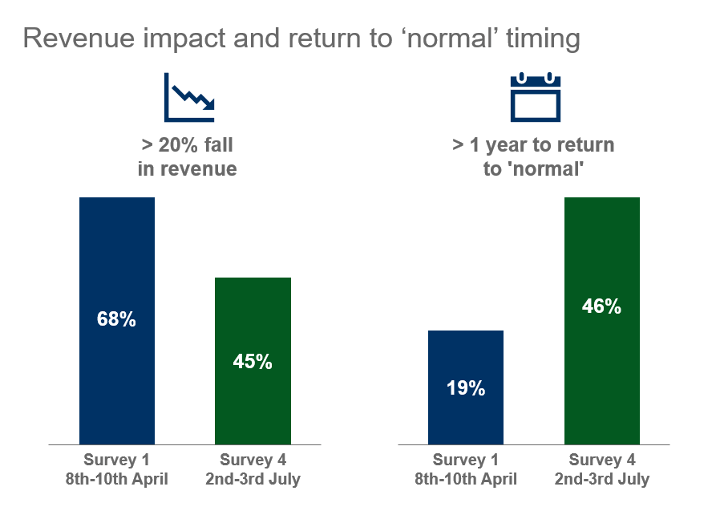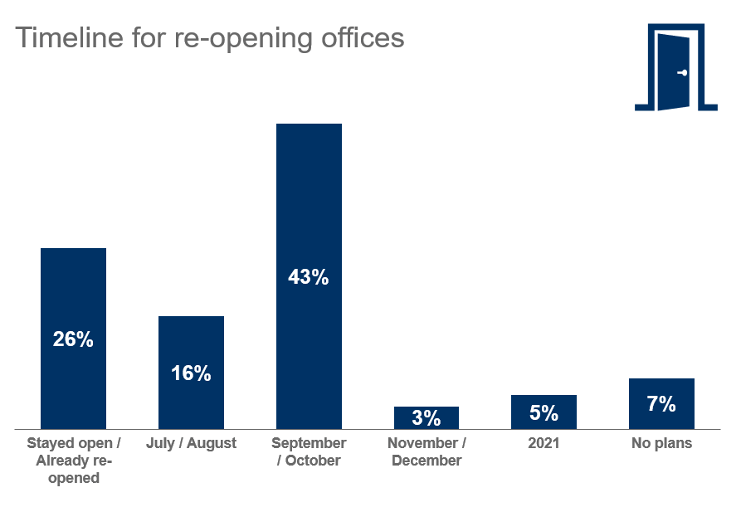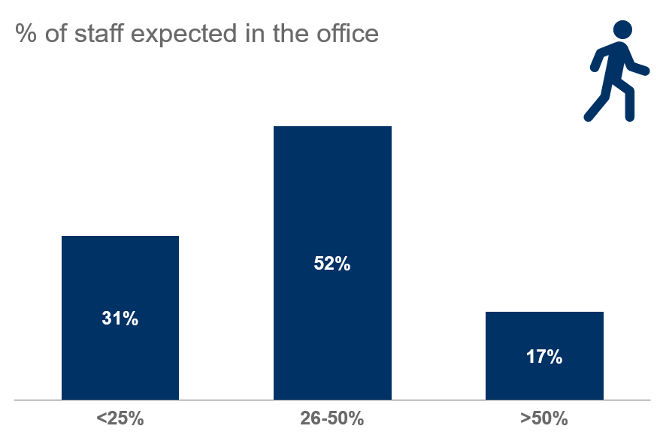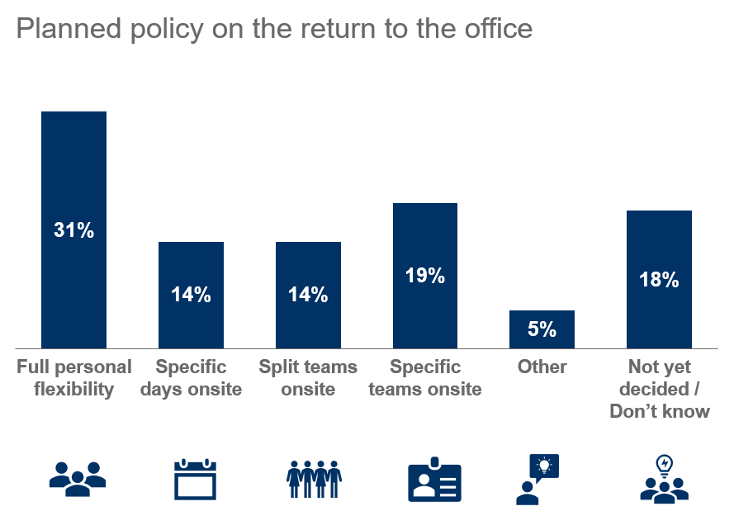Managing the Covid-19 crisis: Returning to the office
Difficult judgments and trade-offs will characterise business activity in the coming months, according to the latest Eden McCallum survey, which was carried out in the first few days of July and focused on the re-opening of offices as lockdown eases. The difficulty stems from uncertainty about future prospects and trading conditions – an uncertainty reflected in the latest survey findings.
Around 140 businesses in the UK and beyond responded with their expectations for the coming months. While there is now less gloom about the prospects for revenue than earlier on in the Covid-19 crisis – under half (45%) now expect a fall in revenue of over 20% compared with the 68% who did in April – a return to “normal” trading conditions seems much further off: 46% now feel that “normality” is over a year away, whereas in April only 19% felt that way.

Managing headcount and a return to more normal working practices is a major challenge. Around half of respondents have staff on furlough: of these, three in ten have up to 20% of staff on furlough, while just over one in five (22%) have more than 20% of staff on furlough. Six in ten (62%) have already or expect to make redundancies, a proportion that has not changed since the middle of May.

With the easing of lockdown a formal return to the office is on everyone’s mind. 43% of companies are planning to reopen in September or October, while a similar number are already open or plan to be so in July and August.

But the re-opening of workplaces raises the question of how many people will actually be physically present in the office, and for how long. Once offices are reopened, eight in ten companies expect only half or fewer of their staff to be in at any one time; three in ten are expecting less than a quarter to be present.

Policies to remote vs onsite working vary. Nearly a third (31%) say they will give staff full flexibility on where they choose to work; 19% say they will have specific teams onsite with flexibility for others; 14% will have staff onsite on specific days with flexibility on other days; and a further 14% will split and alternate teams. No-one – zero % – is proposing to return to their pre-lockdown approach.

Several factors influence these choices. Staff safety was considered “very important” by 91% of respondents. Other key factors were staff morale, the need for staff to use public transport to get to work, compliance with legal/regulatory requirements, the challenges of physical changes to the office required for social distancing, and staff’s personal Covid-related responsibilities (e.g. home schooling).
Dena McCallum, co-founder of Eden McCallum, says the range of responses in the latest survey indicates how hard business leaders are thinking about their approach to re-establishing good (and safe) working practices.
“Business leaders are wrestling with a dilemma: the conflicting needs and preferences of staff for home vs onsite working, their own beliefs about productivity and management, and the need above all to ensure staff safety,” she says. “There are concerns about the welfare of staff using public transport and having personal Covid-related responsibilities (e.g, home schooling). Other businesses are more concerned about individual and team productivity, and feel the need to have specific teams working onsite. There is no ‘one right way’ of managing this situation. Leaders will have to weigh up the situation and make their best judgment in the circumstances. This is unchartered territory for everyone,” she adds.
To view the full results, please click here. You can also follow us to remain updated on future research.

